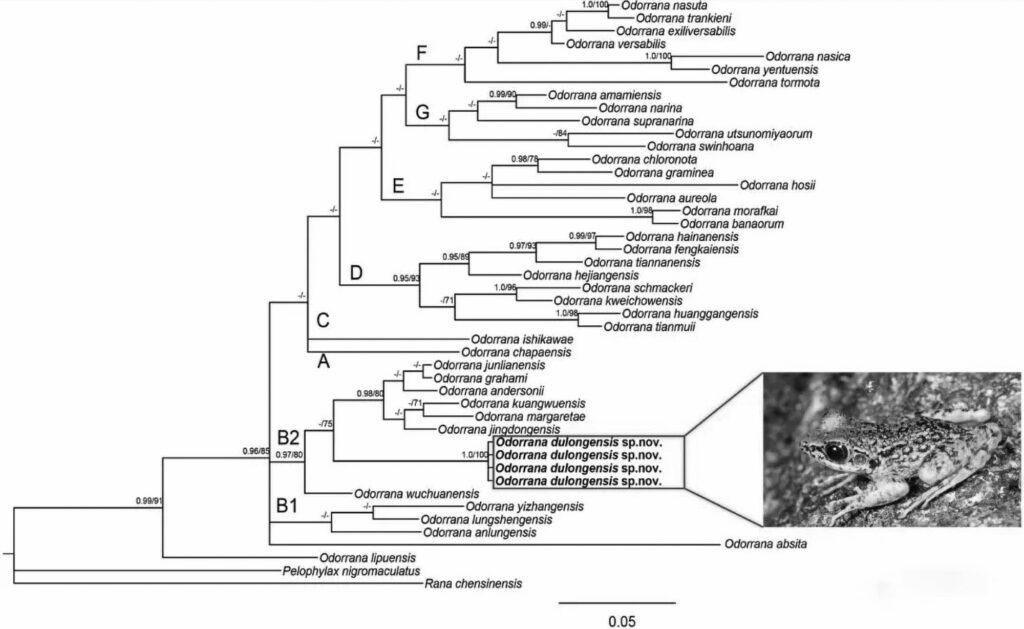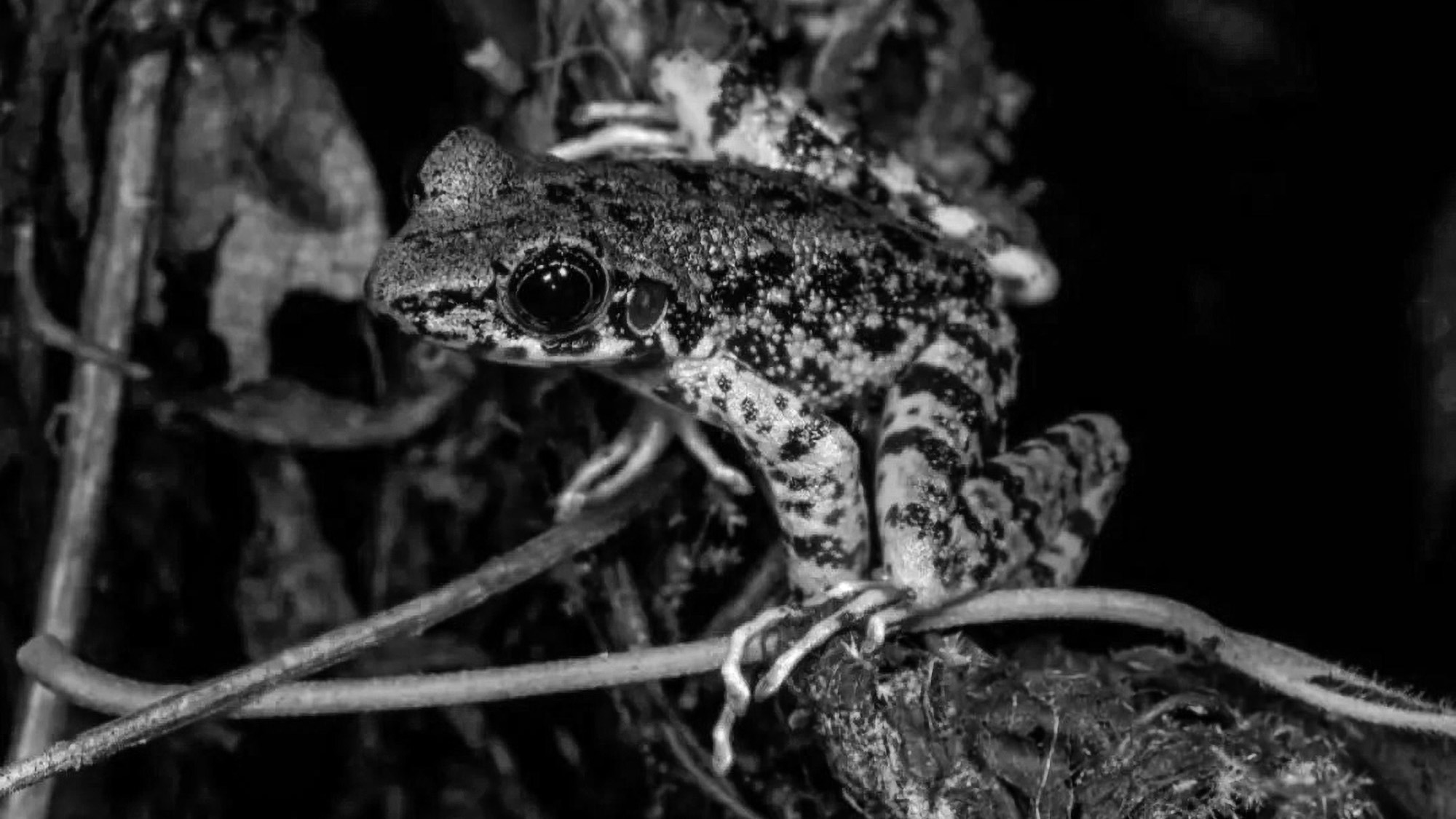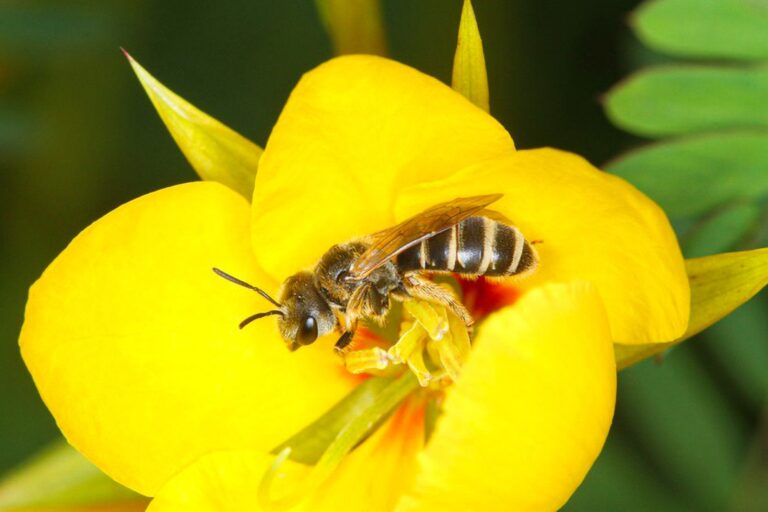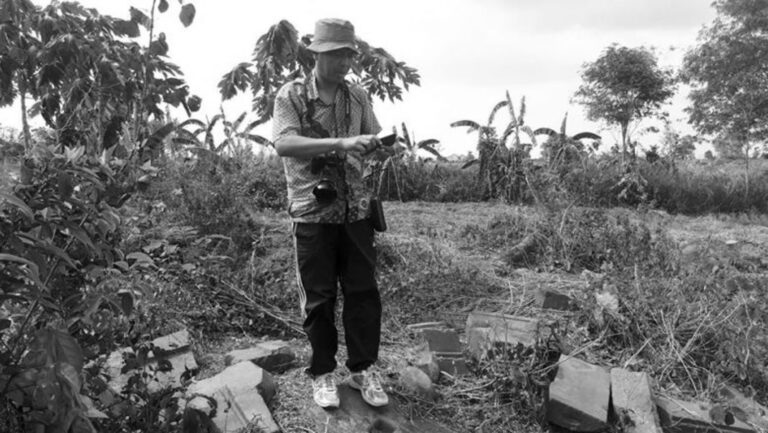A new species of smelly frog that can offer hope for new types of antibiotics has been discovered at the China-Myanmar border.
The new frog species Dulong River Stink Frog (Odorrana dulongensis) is an amphibian of the genus Odorrana and belongs to the smelly frog family Rana with more than 59 existing species in South and Southeast Asia.
According to a scientific examination, the new species is medium size and has a grass-green coloured back covered with black patches, all its fingertips are enlarged into suction cups and male frogs have a pair of external vocal sacs on the sides of their neck.
The Dulong River Stink Frog genetically differs from other Odorrana species by 4.8-6.4 percent based on RNA (ribonucleic acid) tests.

The geographical location of the Dulong River where the stinky frog was found in July 2019 
Dulongjiang Odorrana positive male mold ( A. back side B. back side C. ventral D. head)
The first specimens of the new stinky frogs were collected at the Chinese-Myanman border near the Moon Waterfall in Qinlangdang Village in the southwest Chinese province of Yunnan in July 2019.
The Chinese-Myanmar border area is a well-known biodiversity hotspot that remains largely understudied due to the remote geographic location and the frequent occurrence of geological natural disasters. As of 1997, only four amphibian families and 10 species were recorded in the area.
The new discovery was made during research on the diversity of amphibians and reptiles conducted by Wildlife Conservation team at the College of Biodiversity Conservation of the Southwest Forestry University and the research results were published in the ‘Zootaxa’ journal.
Associate Professor Yuan Zhiyong said: “The discovery of the Dulong River smelly frog once again shows that there are still new species to be discovered in the county and it also shows the necessity of conducting amphibian surveys.”

Dulongjiang Odorrana positive male mold ( A. back side B. back side C. ventral D. head) 
Dulongjiang Odorrana characterized limbs (A. dorsal view palm portion B. palm portion ventral view C. foot dorsal view D. foot ventral view)

The frogs unique smell comes from the fact that their skin secretes chemicals, known as peptides, to protect them from the many infections in their natural habitat that is warm and wet and as a result a place where bacteria also thrives.
These Anti-Microbial Peptides (AMPs) are believed to offer the potential for new antibiotics for use by humans.
The Ananova page is created by and dedicated to professional, independent freelance journalists. It is a place for us to showcase our work. When our news is sold to our media partners, we will include the link here.
The Ananova page is created by and dedicated to professional, independent freelance journalists. It is a place for us to showcase our work. When our news is sold to our media partners, we will include the link here.




